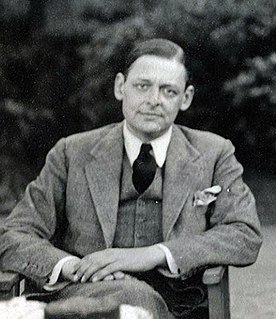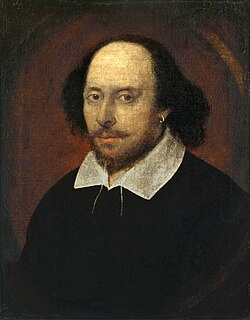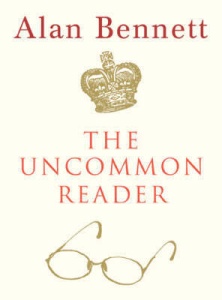Related Research Articles

Charles Walter Stansby Williams was a British poet, novelist, playwright, theologian, literary critic, and member of the Inklings, an informal literary discussion group associated with C. S. Lewis and J. R. R. Tolkien at the University of Oxford.
Free verse is an open form of poetry, which in its modern form arose through the French vers libre form. It does not use consistent meter patterns, rhyme, or any musical pattern. It thus tends to follow the rhythm of natural speech.

Gustave Flaubert was a French novelist. Highly influential, he has been considered the leading exponent of literary realism in his country. According to the literary theorist Kornelije Kvas, "in Flaubert, realism strives for formal perfection, so the presentation of reality tends to be neutral, emphasizing the values and importance of style as an objective method of presenting reality". He is known especially for his debut novel Madame Bovary (1857), his Correspondence, and his scrupulous devotion to his style and aesthetics. The celebrated short story writer Guy de Maupassant was a protégé of Flaubert. On the occasion of Flaubert's 198th birthday, a group of researchers at CNRS published a neural language model under his name.

Thomas Stearns Eliot was a poet, essayist, publisher, playwright, literary critic and editor. Considered one of the 20th century's major poets, he is a central figure in English-language Modernist poetry.

William Shakespeare was an English playwright, poet and actor, widely regarded as the greatest writer in the English language and the world's greatest dramatist. He is often called England's national poet and the "Bard of Avon". His extant works, including collaborations, consist of some 39 plays, 154 sonnets, three long narrative poems, and a few other verses, some of uncertain authorship. His plays have been translated into every major living language and are performed more often than those of any other playwright. They also continue to be studied and reinterpreted.

Madame Bovary, originally published as Madame Bovary: Provincial Manners, is the debut novel of French writer Gustave Flaubert, published in 1856. The eponymous character lives beyond her means in order to escape the banalities and emptiness of provincial life.
This article contains information about the literary events and publications of 1856.
![Don Paterson Writer (1963−[[Category:Errors reported by Module String]]String Module Error: Target string is empty)](https://upload.wikimedia.org/wikipedia/commons/thumb/7/70/DON_PATERSON_READS_AT_BRIDLINGTON_POETRY_FESTIVAL.jpg/213px-DON_PATERSON_READS_AT_BRIDLINGTON_POETRY_FESTIVAL.jpg)
Donald Paterson is a Scottish poet, writer and musician.
Craig Anthony Raine, FRSL is an English contemporary poet. Along with Christopher Reid, he is a notable pioneer of Martian poetry, a movement that expresses alienation with the world, society and objects. He was a fellow of New College, Oxford from 1991 to 2010 and is now emeritus professor. He has been the editor of Areté since 1999.

"Journey of the Magi" is a 43-line poem written in 1927 by T. S. Eliot (1888–1965). It is one of five poems that Eliot contributed for a series of 38 pamphlets by several authors collectively titled Ariel poems and released by British publishing house Faber and Gwyer. Published in August 1927, "Journey of the Magi" was the eighth in the series and was accompanied by illustrations drawn by American-born avant garde artist Edward McKnight Kauffer (1890–1954). The poems, including "Journey of the Magi", were later published in both editions of Eliot's collected poems in 1936 and 1963.

Sir John Frank Kermode, FBA was a British literary critic best known for his 1967 work The Sense of an Ending: Studies in the Theory of Fiction and for his extensive book-reviewing and editing.
Professor John Haffenden FBA FRSL is Emeritus Professor of English Literature at the University of Sheffield.
In literary criticism, an objective correlative is a group of things or events which systematically represent emotions.
Alice Priscilla Lyle Oswald is a British poet from Reading, Berkshire. Her work won the T. S. Eliot Prize in 2002 and the Griffin Poetry Prize in 2017. In September 2017, she was named as BBC Radio 4's second Poet-in-Residence, succeeding Daljit Nagra. On 1 October 2019, she took up the post of Oxford Professor of Poetry.
"Tradition and the Individual Talent" (1919) is an essay written by poet and literary critic T. S. Eliot. The essay was first published in The Egoist (1919) and later in Eliot's first book of criticism, "The Sacred Wood" (1920). The essay is also available in Eliot's "Selected Prose" and "Selected Essays".
Hamlet and His Problems is an essay written by T.S. Eliot in 1919 that offers a critical reading of Hamlet. The essay first appeared in Eliot's The Sacred Wood: Essays on Poetry and Criticism in 1920. It was later reprinted by Faber & Faber in 1932 in Selected Essays, 1917-1932. Eliot's critique gained attention partly due to his claim that Hamlet is "most certainly an artistic failure." Eliot also popularised the concept of the objective correlative—a mechanism used to evoke emotion in an audience—in the essay. The essay is also an example of Eliot's use of what became known as new criticism.

The Uncommon Reader is a novella by Alan Bennett. After appearing first in the London Review of Books, Vol. 29, No. 5, it was published later the same year in book form by Faber & Faber and Profile Books.
Selected Essays, 1917-1932 is a collection of prose and literary criticism by T. S. Eliot. Eliot's work fundamentally changed literary thinking and Selected Essays provides both an overview and an in-depth examination of his theory. It was published in 1932 by his employers, Faber & Faber, costing 12/6.

The T. S. Eliot bibliography contains a list of works by T. S. Eliot.

"A Song for Simeon" is a 37-line poem written in 1928 by American-English poet T. S. Eliot (1888–1965). It is one of five poems that Eliot contributed to the Ariel Poems series of 38 pamphlets by several authors published by Faber and Gwyer. "A Song for Simeon" was the sixteenth in the series and included an illustration by avant garde artist Edward McKnight Kauffer. The poems, including "A Song for Simeon", were later published in both the 1936 and 1963 editions of Eliot's collected poems.
References
- ↑ Baldick, Chris (2008). Oxford Dictionary of Literary Terms. Oxford, England: Oxford University Press
- ↑ Eliot, T.S. (1999). T.S. Eliot Selected Essays. London: Faber and Faber. p. 131. ISBN 0-571-19746-9.